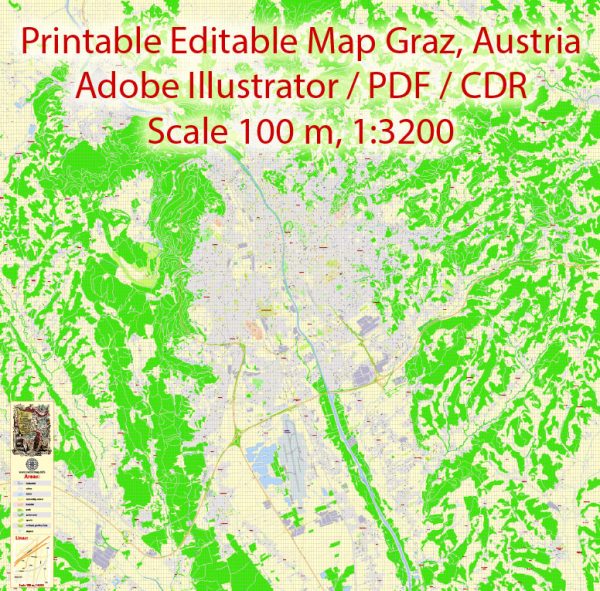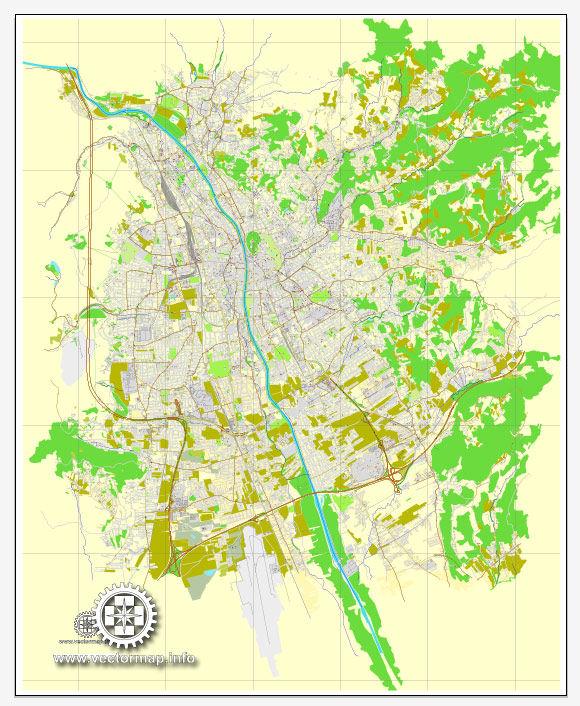Graz, Austria, is the second-largest city in the country and the capital of the Styria region. It is known for its rich history, vibrant culture, and stunning architecture. The city is divided into 17 districts, each with its own unique character and neighborhoods. Here is a brief description of some of the most notable districts and neighborhoods in Graz:
- Innere Stadt (Inner City):
- This is the historic heart of Graz, featuring narrow streets, medieval buildings, and the iconic Clock Tower (Uhrturm). The Hauptplatz (main square) is the center of activity, surrounded by shops, restaurants, and historical sites.
- Geidorf:
- Geidorf is a predominantly residential area with a mix of students and families. It is home to the University of Graz and offers a variety of cafes, parks, and cultural attractions.
- Lend:
- Lend is known for its trendy and artistic vibe. It’s the place to be for nightlife and cultural events, with many bars, galleries, and the Kunsthaus Graz, an iconic modern art museum.
- Gries:
- Gries is a diverse and lively district, with a multicultural atmosphere. The farmers’ market at Lendplatz is a highlight, and there are plenty of international restaurants and shops.
- Eggenberg:
- This district is home to the famous Schloss Eggenberg, a Baroque palace surrounded by beautiful gardens. It’s a quieter residential area with parks and green spaces.
- St. Leonhard:
- St. Leonhard is a charming district with a mix of residential and commercial areas. It’s known for its quiet streets and green spaces like Rosenhain Park.
- Jakomini:
- Jakomini is a bustling district with excellent shopping opportunities along Herrengasse and a variety of restaurants. The city park (Stadtpark) is a peaceful retreat in the middle of the district.
- Waltendorf:
- Waltendorf is a suburban district on the outskirts of Graz, known for its upscale homes and a peaceful, family-friendly atmosphere.
- Andritz:
- This district is known for its proximity to nature, with access to the Mur River and the Schloss St. Martin, a historic castle that now houses a restaurant and event venue.
- Mariatrost:
- Mariatrost is famous for its Basilica, a stunning pilgrimage church on a hill overlooking the city. The district has a quieter, more rural feel compared to the city center.
- Puntigam:
- Puntigam is a primarily industrial district, but it’s also home to some recreational areas and breweries. It’s less touristy and more working-class in character.
- Ries:
- Ries is a hilly district with beautiful landscapes and traditional Austrian architecture. It’s a peaceful residential area with good access to hiking and outdoor activities.
- Liebenau:
- Liebenau is home to the Merkur Arena, where the local football team plays. It’s also where you’ll find the Schwarzlsee, a popular lake for swimming and water sports.
- Straßgang:
- Straßgang is a suburban district with a mix of residential areas and farmland. It’s a peaceful and less crowded part of Graz.
- Wetzelsdorf:
- Wetzelsdorf is another suburban district with a peaceful atmosphere. It offers a mix of residential neighborhoods and green spaces.
- Ragnitz:
- Ragnitz is a predominantly residential district with a rural touch. It’s a bit removed from the city center, providing a quieter living environment.
- Raaba:
- Raaba is an industrial district with factories and businesses. It’s not a typical tourist destination but is important for the local economy.
Graz is a diverse and dynamic city with something to offer everyone, whether you’re interested in history, culture, or a quieter suburban lifestyle. Each district has its own unique charm, making it worth exploring all of them to get a true sense of the city.



 Author: Kirill Shrayber, Ph.D.
Author: Kirill Shrayber, Ph.D.